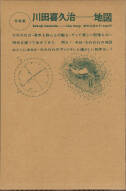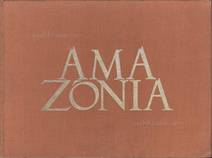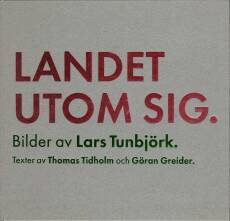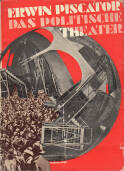African Catwalk
by Per-Anders Pettersson
Photographs: Per-Anders Pettersson
Publisher: Kehrer Verlag
168 pages
Pictures: 80 (color)
Year: 2016
ISBN: 978-3-86828-660-1
Comments: Hardcover, 24 x 31 cm
“African culture has always been seen as being influential anthropologically, but never as a fashion presence in its own right, says designer Duro Olowu. Africa is traditionally known for its poverty, corruption, and ethnic fighting. A new modern Africa is growing rapidly. Some of the fastest growing economies in the world are now in Africa. Many companies and individuals around the world are also looking at Africa as the last continent to develop on the planet. With a billion people and 54 independent countries and a massive growing middle-class that is starting to have money to spend on luxury items.
The fashion industry is growing rapidly and designers from all over Africa are trying to make a mark. There are ever-increasing new fashion weeks in Africa. South Africa has an established fashion scene and runs six fashion weeks year. Others are held in Zimbabwe, Botswana, Mozambique, Namibia, Angola, Nigeria, Tanzania, Kinshasa, DRC, Senegal, Ghana etc. Many of the wealthy people are attracted to the fancy after parties and model parties during these fashion weeks. Many African models are also discovered at these events and at local beauty pageants. Most of them are based in South Africa but some work in Europe and New York. Many of them dream of becoming the next Naomi Campbell or Alek Wek who was born in Sudan.
South Africa is the leading country in fashion on the continent and of course the biggest economy. Nigeria is a quickly growing market with 170 million people, some of them now having money to spend on luxury items and brands. Many of the middle-class and newly rich in Africa spend most of their money on foreign brands but local brands are trying to catch up. Some of the most talented African designers are South Africans David Tlale, Gavin Rajah, Thula Sindi, Taibo Bacar (Mozambique) Deola Sagoe, Folake and Jewel by Liza from Nigeria.
The fashion is often very colorful and with African influences varying from region to region. The craftsmanship and quality is not yet up to European standard but many are trying hard to improve. Many people in Africa are obsessed with style, for example in Soweto and Kinshasa, DRC. The Smarteez designers in Soweto, South Africa are an example and the Sapeurs in Kinshasa, DRC. I have photographed fashion weeks for four years in Africa. In South Africa, Nigeria, Botswana, Mozambique,Tanzania, Rwanda, Congo, DRC, Botswana, etc. This is an ongoing project."
- Per-Anders Pettersson
More books by Per-Anders Pettersson
more books tagged »industry« | >> see all
-
Steel Town
by Stephen Shore
Euro 55 -
DEADLINE (newspaper - signed)
by Will Steacy
Euro 27 21.60 -
Magie der Schiene
by Rene Groebli
Euro 49.90 -
Paris
by Moï Ver
sold out -
Schema
by Alexander Gronsky, Ksenia Babushkina
sold out -
Magie der Schiene (signed - last copy)
by Rene Groebli
Euro 95
more books tagged »color« | >> see all
-
Blumen
by Collier Schorr
sold out -
Martin Parr (signed)
by Martin Parr
sold out -
At Home
by Bruce Wrighton
sold out -
Autoportrait 1996-2015
by Martin Parr
Euro 23 -
Topography of Quiet
by Bastienne Schmidt
sold out -
8630 Mariazell
by Erwin Polanc
Euro 35
more books tagged »fashion« | >> see all
-
Best of British
by Horst A. Friedrichs, Simon Crompton, Toby Egelnick
sold out -
Roxane II (signed - last copy)
by Viviane Sassen
Euro 165 -
Denim Style
by Horst A. Friedrichs
Euro 25 17.50 -
OR GLORY: 21st Century Rockers (signed + print)
by Horst A. Friedrichs
Euro 108.90 87.12 -
OR GLORY: 21st Century Rockers
by Horst A. Friedrichs
sold out -
I'M ONE (signed)
by Horst A. Friedrichs
Euro 88
more books tagged »Africa« | >> see all
-
THIS IS WHAT HATRED DID (signed - last copy)
by Cristina de Middel
Euro 135 -
The Afronauts
by Cristina de Middel
sold out -
A Sense of Common Ground
by Fazal Sheikh
Euro 69 -
The Borderlands
by Jo Ractliffe
sold out -
This Must Be The Place
by Pieter Hugo
sold out -
Museum of the Revolution
by Guy Tillim
Euro 125
more books tagged »fashion photography« | >> see all
-
tragedy of a venus 1975
by Sanja Iveković
Euro 25 -
In and Out of Fashion
by Viviane Sassen
sold out -
All About Saul Leiter
by Saul Leiter
sold out -
Now and Then (english edition)
by Sarah Moon
sold out -
drawn by the light
by Roland Pleterski / OstLIcht Collection
Euro 34.90 -
ROXANE
by Viviane Sassen
sold out
more books tagged »Swedish« | >> see all
-
Go to Become (signed)
by Jörgen Axelvall
Euro 62 -
French Kiss
by Anders Petersen
sold out -
Swedish red
by Joakim Eneroth
Euro 28.80 -
3x3 Eksjö, Hjo, Nora (last copy)
by Lars Tunbjörk, Pieter Ten Hoopen, Elin Berge
Euro 65 -
Tyre Choice (signed, last copy)
by Gerry Johansson
Euro 58 -
Witty Kiwi Mag: Issue 1
by various photographers
sold out
Random selection from the Virtual bookshelf josefchladek.com
African Catwalk
by Per-Anders Pettersson
Photographs: Per-Anders Pettersson
Publisher: Kehrer Verlag
168 pages
Pictures: 80 (color)
Year: 2016
ISBN: 978-3-86828-660-1
Comments: Hardcover, 24 x 31 cm
“African culture has always been seen as being influential anthropologically, but never as a fashion presence in its own right, says designer Duro Olowu. Africa is traditionally known for its poverty, corruption, and ethnic fighting. A new modern Africa is growing rapidly. Some of the fastest growing economies in the world are now in Africa. Many companies and individuals around the world are also looking at Africa as the last continent to develop on the planet. With a billion people and 54 independent countries and a massive growing middle-class that is starting to have money to spend on luxury items.
The fashion industry is growing rapidly and designers from all over Africa are trying to make a mark. There are ever-increasing new fashion weeks in Africa. South Africa has an established fashion scene and runs six fashion weeks year. Others are held in Zimbabwe, Botswana, Mozambique, Namibia, Angola, Nigeria, Tanzania, Kinshasa, DRC, Senegal, Ghana etc. Many of the wealthy people are attracted to the fancy after parties and model parties during these fashion weeks. Many African models are also discovered at these events and at local beauty pageants. Most of them are based in South Africa but some work in Europe and New York. Many of them dream of becoming the next Naomi Campbell or Alek Wek who was born in Sudan.
South Africa is the leading country in fashion on the continent and of course the biggest economy. Nigeria is a quickly growing market with 170 million people, some of them now having money to spend on luxury items and brands. Many of the middle-class and newly rich in Africa spend most of their money on foreign brands but local brands are trying to catch up. Some of the most talented African designers are South Africans David Tlale, Gavin Rajah, Thula Sindi, Taibo Bacar (Mozambique) Deola Sagoe, Folake and Jewel by Liza from Nigeria.
The fashion is often very colorful and with African influences varying from region to region. The craftsmanship and quality is not yet up to European standard but many are trying hard to improve. Many people in Africa are obsessed with style, for example in Soweto and Kinshasa, DRC. The Smarteez designers in Soweto, South Africa are an example and the Sapeurs in Kinshasa, DRC. I have photographed fashion weeks for four years in Africa. In South Africa, Nigeria, Botswana, Mozambique,Tanzania, Rwanda, Congo, DRC, Botswana, etc. This is an ongoing project."
- Per-Anders Pettersson
More books by Per-Anders Pettersson
more books tagged »industry« | >> see all
-
Steel Town
by Stephen Shore
Euro 55 -
DEADLINE (newspaper - signed)
by Will Steacy
Euro 27 21.60 -
Magie der Schiene
by Rene Groebli
Euro 49.90 -
Paris
by Moï Ver
sold out -
Schema
by Alexander Gronsky, Ksenia Babushkina
sold out -
Magie der Schiene (signed - last copy)
by Rene Groebli
Euro 95
more books tagged »color« | >> see all
-
Blumen
by Collier Schorr
sold out -
Martin Parr (signed)
by Martin Parr
sold out -
At Home
by Bruce Wrighton
sold out -
Autoportrait 1996-2015
by Martin Parr
Euro 23 -
Topography of Quiet
by Bastienne Schmidt
sold out -
8630 Mariazell
by Erwin Polanc
Euro 35
more books tagged »fashion« | >> see all
-
Best of British
by Horst A. Friedrichs, Simon Crompton, Toby Egelnick
sold out -
Roxane II (signed - last copy)
by Viviane Sassen
Euro 165 -
Denim Style
by Horst A. Friedrichs
Euro 25 17.50 -
OR GLORY: 21st Century Rockers (signed + print)
by Horst A. Friedrichs
Euro 108.90 87.12 -
OR GLORY: 21st Century Rockers
by Horst A. Friedrichs
sold out -
I'M ONE (signed)
by Horst A. Friedrichs
Euro 88
more books tagged »Africa« | >> see all
-
THIS IS WHAT HATRED DID (signed - last copy)
by Cristina de Middel
Euro 135 -
The Afronauts
by Cristina de Middel
sold out -
A Sense of Common Ground
by Fazal Sheikh
Euro 69 -
The Borderlands
by Jo Ractliffe
sold out -
This Must Be The Place
by Pieter Hugo
sold out -
Museum of the Revolution
by Guy Tillim
Euro 125
more books tagged »fashion photography« | >> see all
-
tragedy of a venus 1975
by Sanja Iveković
Euro 25 -
In and Out of Fashion
by Viviane Sassen
sold out -
All About Saul Leiter
by Saul Leiter
sold out -
Now and Then (english edition)
by Sarah Moon
sold out -
drawn by the light
by Roland Pleterski / OstLIcht Collection
Euro 34.90 -
ROXANE
by Viviane Sassen
sold out
more books tagged »Swedish« | >> see all
-
Go to Become (signed)
by Jörgen Axelvall
Euro 62 -
French Kiss
by Anders Petersen
sold out -
Swedish red
by Joakim Eneroth
Euro 28.80 -
3x3 Eksjö, Hjo, Nora (last copy)
by Lars Tunbjörk, Pieter Ten Hoopen, Elin Berge
Euro 65 -
Tyre Choice (signed, last copy)
by Gerry Johansson
Euro 58 -
Witty Kiwi Mag: Issue 1
by various photographers
sold out
Random selection from the Virtual bookshelf josefchladek.com
African Catwalk
by Per-Anders Pettersson
Photographs: Per-Anders Pettersson
Publisher: Kehrer Verlag
168 pages
Pictures: 80 (color)
Year: 2016
ISBN: 978-3-86828-660-1
Comments: Hardcover, 24 x 31 cm
“African culture has always been seen as being influential anthropologically, but never as a fashion presence in its own right, says designer Duro Olowu. Africa is traditionally known for its poverty, corruption, and ethnic fighting. A new modern Africa is growing rapidly. Some of the fastest growing economies in the world are now in Africa. Many companies and individuals around the world are also looking at Africa as the last continent to develop on the planet. With a billion people and 54 independent countries and a massive growing middle-class that is starting to have money to spend on luxury items.
The fashion industry is growing rapidly and designers from all over Africa are trying to make a mark. There are ever-increasing new fashion weeks in Africa. South Africa has an established fashion scene and runs six fashion weeks year. Others are held in Zimbabwe, Botswana, Mozambique, Namibia, Angola, Nigeria, Tanzania, Kinshasa, DRC, Senegal, Ghana etc. Many of the wealthy people are attracted to the fancy after parties and model parties during these fashion weeks. Many African models are also discovered at these events and at local beauty pageants. Most of them are based in South Africa but some work in Europe and New York. Many of them dream of becoming the next Naomi Campbell or Alek Wek who was born in Sudan.
South Africa is the leading country in fashion on the continent and of course the biggest economy. Nigeria is a quickly growing market with 170 million people, some of them now having money to spend on luxury items and brands. Many of the middle-class and newly rich in Africa spend most of their money on foreign brands but local brands are trying to catch up. Some of the most talented African designers are South Africans David Tlale, Gavin Rajah, Thula Sindi, Taibo Bacar (Mozambique) Deola Sagoe, Folake and Jewel by Liza from Nigeria.
The fashion is often very colorful and with African influences varying from region to region. The craftsmanship and quality is not yet up to European standard but many are trying hard to improve. Many people in Africa are obsessed with style, for example in Soweto and Kinshasa, DRC. The Smarteez designers in Soweto, South Africa are an example and the Sapeurs in Kinshasa, DRC. I have photographed fashion weeks for four years in Africa. In South Africa, Nigeria, Botswana, Mozambique,Tanzania, Rwanda, Congo, DRC, Botswana, etc. This is an ongoing project."
- Per-Anders Pettersson
More books by Per-Anders Pettersson
more books tagged »industry« | >> see all
-
Steel Town
by Stephen Shore
Euro 55 -
DEADLINE (newspaper - signed)
by Will Steacy
Euro 27 21.60 -
Magie der Schiene
by Rene Groebli
Euro 49.90 -
Paris
by Moï Ver
sold out -
Schema
by Alexander Gronsky, Ksenia Babushkina
sold out -
Magie der Schiene (signed - last copy)
by Rene Groebli
Euro 95
more books tagged »color« | >> see all
-
Blumen
by Collier Schorr
sold out -
Martin Parr (signed)
by Martin Parr
sold out -
At Home
by Bruce Wrighton
sold out -
Autoportrait 1996-2015
by Martin Parr
Euro 23 -
Topography of Quiet
by Bastienne Schmidt
sold out -
8630 Mariazell
by Erwin Polanc
Euro 35
more books tagged »fashion« | >> see all
-
Best of British
by Horst A. Friedrichs, Simon Crompton, Toby Egelnick
sold out -
Roxane II (signed - last copy)
by Viviane Sassen
Euro 165 -
Denim Style
by Horst A. Friedrichs
Euro 25 17.50 -
OR GLORY: 21st Century Rockers (signed + print)
by Horst A. Friedrichs
Euro 108.90 87.12 -
OR GLORY: 21st Century Rockers
by Horst A. Friedrichs
sold out -
I'M ONE (signed)
by Horst A. Friedrichs
Euro 88
more books tagged »Africa« | >> see all
-
THIS IS WHAT HATRED DID (signed - last copy)
by Cristina de Middel
Euro 135 -
The Afronauts
by Cristina de Middel
sold out -
A Sense of Common Ground
by Fazal Sheikh
Euro 69 -
The Borderlands
by Jo Ractliffe
sold out -
This Must Be The Place
by Pieter Hugo
sold out -
Museum of the Revolution
by Guy Tillim
Euro 125
more books tagged »fashion photography« | >> see all
-
tragedy of a venus 1975
by Sanja Iveković
Euro 25 -
In and Out of Fashion
by Viviane Sassen
sold out -
All About Saul Leiter
by Saul Leiter
sold out -
Now and Then (english edition)
by Sarah Moon
sold out -
drawn by the light
by Roland Pleterski / OstLIcht Collection
Euro 34.90 -
ROXANE
by Viviane Sassen
sold out
more books tagged »Swedish« | >> see all
-
Go to Become (signed)
by Jörgen Axelvall
Euro 62 -
French Kiss
by Anders Petersen
sold out -
Swedish red
by Joakim Eneroth
Euro 28.80 -
3x3 Eksjö, Hjo, Nora (last copy)
by Lars Tunbjörk, Pieter Ten Hoopen, Elin Berge
Euro 65 -
Tyre Choice (signed, last copy)
by Gerry Johansson
Euro 58 -
Witty Kiwi Mag: Issue 1
by various photographers
sold out
Random selection from the Virtual bookshelf josefchladek.com

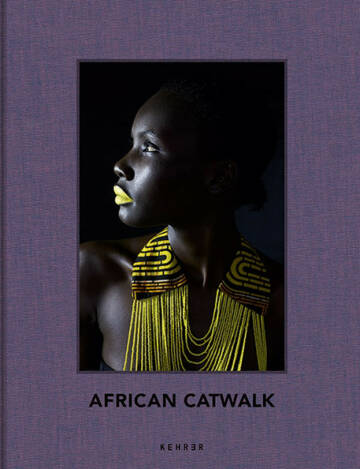







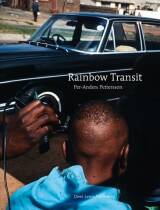




































;jpg?c=30191ed518e77730a896d78789ebc791)


;jpg?c=3e12b2ca76fececba1dd3e19dc8e66f0)

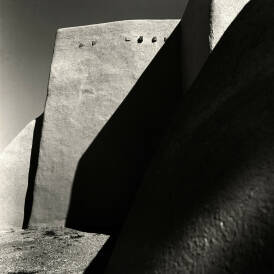


_eisen._(bauen_in)_eisenbeton.;jpg?c=7c987624718ec649bc3c1722501b5add)
